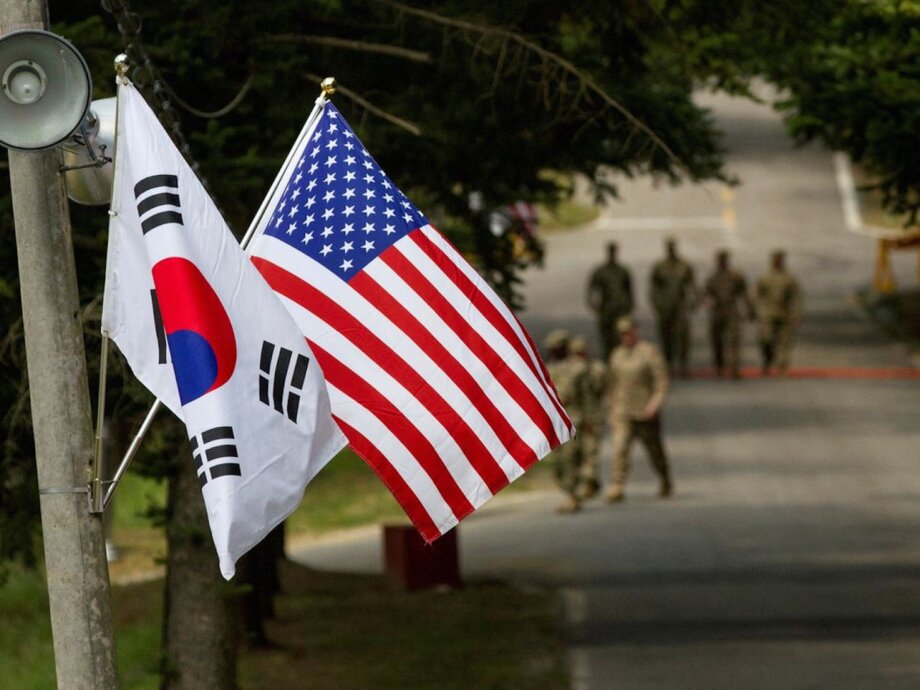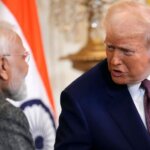The US-South Korea Alliance at a Crossroads
The alliance between the United States and South Korea has long been a linchpin of security and economic stability in Northeast Asia. But in 2025, this partnership faces unprecedented uncertainty. A new wave of US tariffs, a shift toward transactional diplomacy under President Donald Trump, and mounting regional pressures are forcing Seoul to rethink its strategic posture and economic future. As both countries navigate a rapidly changing global landscape, the very definition and durability of their alliance are being put to the test.
- The US-South Korea Alliance at a Crossroads
- How Did We Get Here? The Road to Tariff Tensions
- Inside the Deal: What Did South Korea Concede?
- Transactional Diplomacy: A New Normal?
- Economic Fallout: Winners, Losers, and Uncertainty
- Security Dilemmas: North Korea, China, and Alliance Pressures
- Domestic Politics and the Limits of Leadership
- Regional Implications: Shifting Alliances and Strategic Calculations
- Looking Ahead: Can the Alliance Endure?
- In Summary
How Did We Get Here? The Road to Tariff Tensions
For decades, the US-South Korea alliance has evolved from a Cold War-era military pact into a comprehensive strategic partnership. The two countries have deepened cooperation in trade, technology, and security, with the US providing a security umbrella against North Korean threats and South Korea emerging as a global economic powerhouse. However, the alliance has also weathered periodic strains—over trade imbalances, defense cost-sharing, and divergent approaches to regional diplomacy.
The latest crisis began in early 2025, when President Trump announced sweeping new tariffs on imports from dozens of countries, including South Korea. The initial threat: a 25% tariff on all South Korean exports to the US, with even higher rates for steel and aluminum. The rationale, according to Trump, was to revive American manufacturing, reduce trade deficits, and fund recent tax cuts. But for South Korea, an export-driven economy where shipments to the US account for nearly a fifth of total exports, the stakes were existential.
Negotiations were tense and protracted. South Korea, already reeling from political turmoil at home and a sluggish economy, scrambled to avoid the worst-case scenario. Ultimately, just hours before the August 1 deadline, Seoul and Washington struck a deal: the US would impose a 15% tariff on South Korean imports—lower than the threatened 25%—in exchange for a massive $350 billion investment package from South Korea into US industries, plus $100 billion in energy purchases over the next 3.5 years. Sensitive sectors like rice and beef were shielded from new concessions, a key win for Seoul’s negotiators.
Inside the Deal: What Did South Korea Concede?
The final agreement, as reported by multiple sources, is sweeping in scope:
- 15% Tariff Rate: South Korean exports to the US—including cars and semiconductors—will face a 15% tariff, matching the rate secured by Japan and the European Union. Steel and aluminum, however, will be taxed at 50%.
- $350 Billion Investment: South Korea pledged to invest $350 billion in US projects, with $200 billion earmarked for strategic industries like semiconductors, batteries, and biopharma, and $150 billion for a shipbuilding initiative dubbed “Make America Shipbuilding Great Again.” This move aims to bolster both US industrial capacity and South Korea’s own shipbuilding sector.
- $100 Billion in Energy Purchases: Seoul agreed to buy $100 billion worth of US liquefied natural gas (LNG), crude oil, and other energy products over the next four years.
- Most-Favored-Nation Status: The US granted South Korea most-favored-nation treatment in key sectors, providing some predictability for future tariff considerations.
South Korean President Lee Jae-myung called the outcome a “major breakthrough,” emphasizing that it restored predictability for Korean exporters and aligned with both countries’ industrial ambitions. Yet, the deal also suspends the near-zero tariff regime established under the 2012 Korea-US Free Trade Agreement, marking a significant shift in the economic relationship.
Transactional Diplomacy: A New Normal?
What sets this episode apart is not just the scale of the tariffs or the size of the investment package, but the underlying approach to diplomacy. President Trump’s “America First” agenda has recast US foreign policy as a series of transactional exchanges, where economic and security issues are merged and every concession is weighed on a ledger of obligations. Allies are expected to “pay their fair share”—whether in defense spending, trade concessions, or strategic alignment.
This shift has unsettled many in Seoul. South Korean officials and business leaders worry that security commitments—such as the US troop presence on the peninsula—could be used as leverage for further economic concessions. Trump has openly suggested that South Korea should pay more for US defense guarantees and has even floated the possibility of withdrawing US troops if Seoul does not comply. This approach, critics argue, erodes trust and turns longstanding alliances into relationships of convenience.
Keum Hye-yoon, a researcher at the Korea Institute for International Economic Policy, explained, “Trump’s tariff policy is based on unilateral expectations and could burden both US and South Korean businesses.”
Public sentiment in South Korea has soured. A Pew Research Center survey found that favorable views of the US among South Koreans dropped from 77% in 2024 to 61% in 2025, reflecting growing resentment over what many see as unfair treatment by a supposed ally.
Economic Fallout: Winners, Losers, and Uncertainty
The economic impact of the new tariffs and investment commitments is already being felt. South Korean manufacturers—especially in autos, steel, semiconductors, and pharmaceuticals—have reported disruptions. Exports dropped 2.2% in the first 20 days of July compared to a year earlier, and some production lines have closed, leading to employment disputes. Small and medium-sized enterprises, which lack the resources to shift manufacturing or diversify markets, are particularly vulnerable.
Analysts warn that the costs of the tariffs will likely be passed on to US consumers, raising prices for cars, electronics, and other goods. The S&P 500 fell and Treasury yields rose after the announcement, signaling market jitters. Critics also argue that using tariff revenue to offset tax cuts could shift the tax burden onto ordinary Americans.
For South Korea, the deal provides some breathing room but at a steep price. The $350 billion investment is less than Japan’s $550 billion commitment to the US, but still represents a significant outflow of capital. There are also concerns about whether the scale of investment exceeds South Korea’s current reserves, prompting the government to downplay the total figure for domestic political reasons.
Security Dilemmas: North Korea, China, and Alliance Pressures
While trade and economics have dominated headlines, the security dimension of the US-South Korea alliance remains as critical as ever. The two countries are preparing for their annual Ulchi Freedom Shield military exercise, involving thousands of troops and designed to deter North Korean aggression. North Korea, for its part, has denounced the drills as invasion rehearsals and has ramped up its own military demonstrations, including missile tests and nuclear threats.
At the same time, the Trump administration’s focus on burden-sharing and strategic flexibility has raised questions about the future of the US military presence in South Korea. Some US officials have suggested that American forces could be redeployed to address broader regional threats, such as a potential conflict over Taiwan, leaving Seoul to shoulder more of the defense burden against Pyongyang.
Col. Ryan Donald, public affairs director for US Forces Korea, stated, “The alliance is focused on ensuring it is sustainable and credibly deters aggression from North Korea and addresses broader regional security challenges.”
South Korea also faces a delicate balancing act with China, its largest trading partner. The US has pushed for closer trilateral cooperation with Japan and for Seoul to align more closely with Washington’s efforts to counter Beijing. But every move to reassure Washington is scrutinized by Beijing, leaving South Korea caught between its security guarantor and its economic lifeline.
Domestic Politics and the Limits of Leadership
The timing of the tariff crisis could hardly be worse for South Korea. President Lee Jae-myung took office in June 2025 amid a legitimacy crisis, following the impeachment of his predecessor. His administration is under pressure to deliver economic recovery, address youth unemployment, and push through corporate governance reforms. But as experts note, Lee’s ability to deliver on these promises is constrained by forces beyond his control—global trade wars, US-China technology competition, and the unpredictable whims of Washington.
South Korea’s powerful chaebols (family-run conglomerates) like Samsung, Hyundai, and LG are both assets and obstacles. They have the capacity to invest in US industries and support government negotiations, but their dominance also stifles innovation and limits the flexibility of the broader economy. Lee has pledged mandatory governance reforms, but past efforts to rein in the chaebols have met fierce resistance.
Meanwhile, the political crisis in Seoul has left the government with limited leverage in negotiations. With key leaders preoccupied or sidelined, bureaucrats and business leaders have had to fill the void, often with mixed results. The absence of a strong, unified voice has made it harder for South Korea to push back against US demands or to coordinate with other allies facing similar pressures.
Regional Implications: Shifting Alliances and Strategic Calculations
The US-South Korea tariff deal is not happening in a vacuum. Trump’s new tariffs hit not just South Korea, but also Japan, the EU, and dozens of other countries, with rates ranging from 10% to 50%. The move has triggered a wave of retaliatory measures, market volatility, and growing skepticism about the future of the global trading system.
For South Korea, the experience of economic coercion is not new. In recent years, Seoul has faced pressure from China over missile defense deployments and from Japan over export restrictions. Each time, South Korea responded with trade diversification, investments in research and development, and support for affected industries. The current crisis may accelerate efforts to diversify export markets, deepen ties with Southeast Asia, and pursue more autonomous economic and security policies.
Yet, the reality is that South Korea’s options are limited. Its economy is more trade-dependent than Japan’s, and its security is inextricably linked to the US alliance. While some in Seoul advocate for greater engagement with China or for hedging strategies, the risks of alienating Washington or provoking Beijing are high. The challenge for President Lee and his successors will be to navigate these competing pressures without sacrificing core national interests.
Looking Ahead: Can the Alliance Endure?
As President Lee prepares for a high-stakes summit with President Trump, the future of the US-South Korea alliance hangs in the balance. The immediate focus will be on implementing the tariff deal, managing investment commitments, and addressing unresolved issues such as defense cost-sharing and North Korea policy. But the broader question is whether the alliance can adapt to a new era of transactional diplomacy, great power competition, and domestic political upheaval.
Experts caution that alliances based solely on historical narratives or ideological affinities are no longer sufficient. In an era where economic and security interests are increasingly intertwined, both Washington and Seoul will need to pursue pragmatic, interest-driven policies. For the US, prioritizing short-term gains at the expense of trusted allies could ultimately undermine its own strategic objectives. For South Korea, the path forward will require resilience, adaptability, and a willingness to engage with multiple partners in a complex and uncertain world.
In Summary
- The US-South Korea alliance faces its greatest test in decades, with new tariffs and a transactional approach to diplomacy straining trust and cooperation.
- South Korea narrowly avoided a 25% tariff by agreeing to a 15% rate and a $350 billion investment package in US industries, plus $100 billion in energy purchases.
- The deal marks a shift away from the near-zero tariff regime of the past and reflects a broader trend toward economic nationalism and conditional alliances.
- South Korea’s export-driven economy is vulnerable to external shocks, and the new tariffs have already caused disruptions in key industries.
- Security concerns remain paramount, with ongoing military exercises and uncertainty about the future of the US troop presence on the peninsula.
- Domestic political turmoil and structural economic challenges limit Seoul’s ability to respond effectively to US demands.
- Regional dynamics—including North Korea’s nuclear ambitions and China’s economic assertiveness—complicate South Korea’s strategic calculations.
- The future of the alliance will depend on pragmatic engagement, mutual trust, and the ability to adapt to a rapidly changing global environment.












